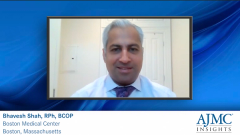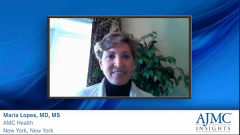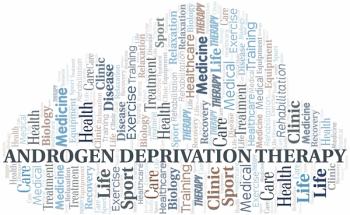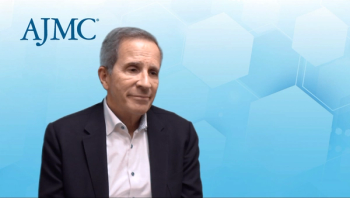
Impact of CVD Risk on Cost of Care in Prostate Cancer
Shared insight on the impact that cardiovascular disease has on cost of care in prostate cancer.
Episodes in this series

Transcript:
John L. Fox, MD, MHA: When payers consider the total cost of care for patients with cancer, it really is primarily focused on the cost of cancer care and not the total cost of care. Certainly, patients diagnosed with cancer have other comorbidities, but they’re not typically considered when we’re making formulary decisions or developing pathways or preferred therapies. Notably, though, I would say that especially in total cost of care models like the Centers for Medicare & Medicaid Innovation and their Oncology Care Model [OCM], oncologists and health plans have been more focused on the total cost of care because in OCM practices, they are responsible for all costs, including the cost of other comorbidities and complications. As a side note, in breast cancer, the second most common cause of hospitalization, and a big cost driver, is women who have hip replacements. I only bring that up because that’s included in the oncologists’ total cost of care and what they’re responsible for. I think in the same light, for prostate cancer, the oncology practice treating a man with metastatic prostate cancer is going to be responsible for all those costs for that patient, including any costs related to cardiovascular morbidity. So I think it’s incumbent upon us when we’re thinking about the total cost of care for these men to figure out, how do we reduce waste? How do we reduce harm? And in this space, reducing harm could include the selection of which type of GnRH [gonadotropin-releasing hormone] therapy, an agonist or an antagonist, is going to be used.
Maria Lopes, MD, MS: Since you may actually die of cardiovascular risk rather than prostate cancer, I think it is really important to consider age [and] comorbidities. We do a lot of predictive modeling as a payer, so thinking about not just age and comorbidities but what medications you’re on, integrating laboratory data, integrating total cost of claims, which may include cardiac history, including imaging. This includes having a broader picture and not just a compartmentalized picture, [having] holistic integration, multidisciplinary integration of care, so that cardiologists, if they are involved, or PCPs [primary care providers] who are involved in treating diabetes [or] hypertension, also are aware that if a patient is on an ADT [androgen deprivation therapy], how much that adds to that risk. Also important is oncologist education or even urologist education around the choice of treatments and the implications for cardiovascular risks. As a payer, we [collect] a lot of data, a lot of clinical information, so how could we be smarter about perhaps identifying patients with prostate cancer if they’re on ADT? In the background, we look at the context of any other risk factors for cardiovascular risk to raise awareness of the risk/benefit of ADT. If there are alternatives that can be used that provide for lower risk or that don’t compound the risk of somebody who already has risk factors, that can have significant implication on cost of care, especially if we’re compounding the potential for cardiac events and hospitalizations and what happens with each event in terms of increased risk and increased costs.
John L. Fox, MD, MHA: As a health plan, we’ve had a long history of working with practices, especially oncology practices, to understand what cost drivers are and how we could minimize cost, not only the cost of waste, but also the harms associated with therapy. In that regard, we’ve looked men with prostate cancer, and our simple question was, let’s stack up all the patients who have prostate cancer, let’s look at their cost, and let’s see what those cost drivers are. What we found in the most costly patients was that the cost drivers were not the treatment of prostate cancer. The major cost driver was the cost of treating cardiovascular disease. In fact, in 4 of the top 5 most costly patients, [hospital] admission for cardiovascular events was the largest cost driver. Now, this wasn’t a scientific study, but it drove home the fact that if we were going to minimize costs in prostate cancer, especially among the most complicated patients, that we had to focus on mechanisms for reducing cardiovascular risk.
Transcript edited for clarity.
Newsletter
Stay ahead of policy, cost, and value—subscribe to AJMC for expert insights at the intersection of clinical care and health economics.
































































